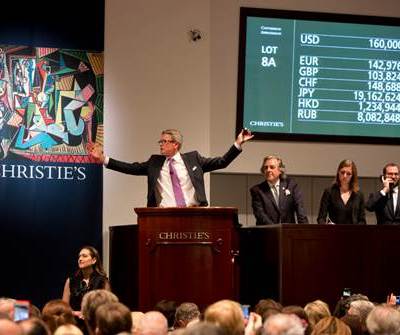This year’s Turner Prize shortlist includes the artists Bonnie Camplin, Janice Kerbel and Nicole Wermers – and Assemble, an architectural collective of 18 under-30-somethings nominated for Granby Four Streets, a project to reclaim and renovate a number of apartments in Toxteth, Liverpool. In the usual flurry of hastily composed reactions, the typical critique – ‘How can this be art?’ – has been replaced by ‘How can architecture be art?’
While architects are trying to figure out how a practice that has built almost nothing permanent has been nominated for Britain’s top contemporary art prize, and media outlets try to provoke debate below the line, the art world bats barely an eyelash at this ‘controversial’ development.
Perhaps, from outside looking in, it seems an unusual choice. But since the 1960s, contemporary art has held its arms open as wide as Bernini’s Vatican colonnades. In a world where, rightly or wrongly, anything can pass as art in the appropriate context, this isn’t – as some architectural critics have claimed – architecture clawing back cultural space from the all-devouring jaws of contemporary art. Far from it. In its never-ending quest for new disciplines to appropriate, explore, question and dismantle, this is yet another example of art enfolding a certain kind of architecture within its remit. ‘Nice rebellion, welcome in!’, as Grayson Perry said in his 2013 Reith Lectures.
Also on Apollo: Is the Turner Prize still relevant at 30?
It’s important to notice which architecture practice was nominated, and for which project. Some in the architecture world have been critical of Assemble’s inclusion on the shortlist, arguing that their portfolio of built work is neither substantial, impressive nor permanent. But there’s a reason that Assemble and not a more traditional architectural outfit are on the shortlist: that’s because, to an art-world audience, Assemble looks and behaves like an art practice. Granby Four Streets fits neatly into an ever-expanding tradition of socially-engaged and civic-minded practice situated in the urban environment. Think, for example, of Theaster Gates’ brilliant Dorchester Projects and Stony Island Arts Bank, or Rick Lowe’s Texan row houses.
It’s equally significant that Assemble were nominated for a project in Toxteth. I would argue that Assemble’s nomination was only possible because of previous artistic work in the area – much of which took place under the remit of the Liverpool Biennial. I’m thinking of Jeanne van Heeswijk’s 2Up 2Down bakery and affordable housing project, which saw the Dutch artist work with the local community to fund-raise and execute the project supported by the 2012 Liverpool Biennial.
I’ve just returned from the Vernissage of the 56th Venice Biennale, this year curated by Okwui Enzewor and it’s clear that politically-minded art is having its moment in the spotlight. It would be unfair to say that the Turner prize is simply cashing in on what’s hot. One of the jury members is Alistair Hudson, the current director of mima, who used to run Grizedale Arts – an organisation whose guiding principle is that art should be useful.
Also on Apollo: Can you live in a sculpture? Is architecture art?
Perhaps more significant than the fact that Assemble is an architecture practice is the fact that it is a collective. Since the Turner Prize was founded, only one other collective has been nominated – Art & Language in 1986 – and only one winner has not been a lone artist – Gilbert & George, also in 1986.
There are so many interesting discussions going on about artworks and labour, and about anonymous collaborations with craftspeople and the outsourcing of production. It’s encouraging to see a collective being nominated and recognised. Hopefully, this is the aspect of the nomination that the art world will discuss more widely, while architects wonder what it means for their discipline that an architecture practice might win Britain’s most important contemporary art prize.
Related Articles
Assemble to design new art gallery at Goldsmiths
Is the Turner Prize still relevant at 30?



